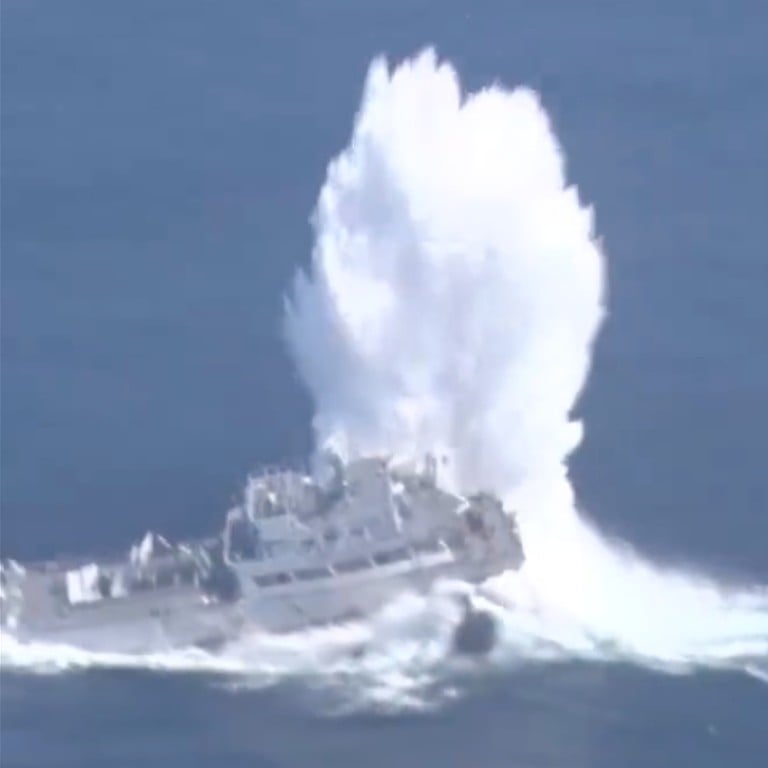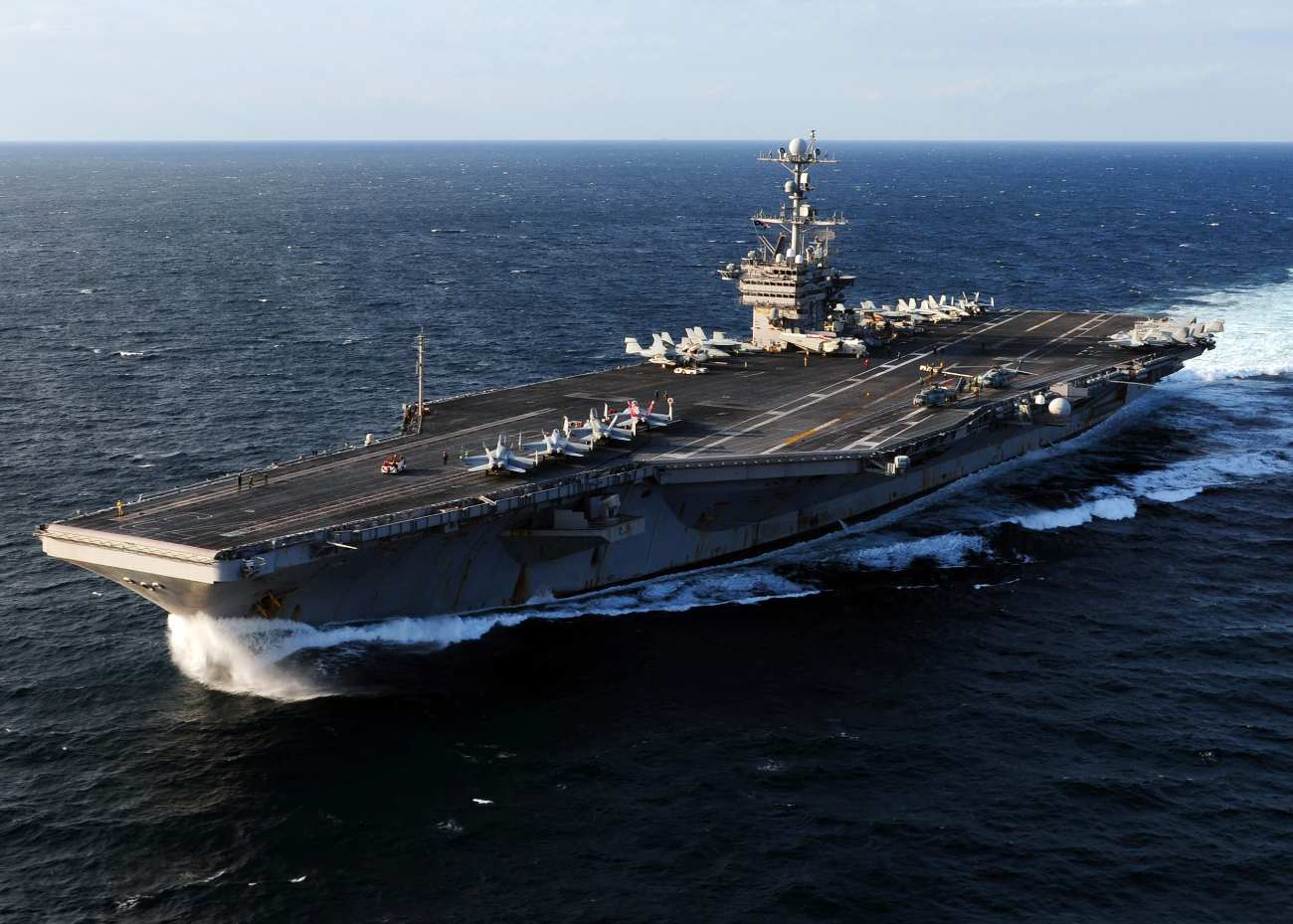An article in a Chinese magazine has disclosed that the weapon used to strike a naval target during a June exercise was “a covert torpedo,” which has the potential to significantly boost the effectiveness of China’s conventional submarines against major naval assets such as aircraft carriers.
In mid-June, China’s state-owned CCTV released footage showcasing a Chinese submarine using an advanced torpedo to sink a naval target.
The demonstration, part of a People’s Liberation Army (PLA) exercise, was shared widely on social media platforms, including China’s Weibo and X (formerly Known as Twitter).
The video went viral, showcasing the intense moment when the torpedo exploded, causing the ship to be forcefully lifted out of the water—an impact that usually harms the vessel’s keel.
US Pushes “F-22, F-35 Fusion” To Indian Air Force Under Make In India; Lockheed Boss Meets PM Modi
Initially, information regarding the torpedo was kept under wraps; however, a recent report from the South China Morning Post (SCMP), referencing the Chinese military magazine Ordnance Industry Science Technology, has revealed that the weapon is the Yu-10.

The torpedo, featured in a documentary marking the 70th anniversary of the PLA Navy’s submarine force, demonstrated formidable firepower during the exercise.
The target, believed to be a retired Type 074 amphibious landing vessel, was hit with such force that its stern was thrust skyward, creating a spectacular water plume nearly 100 meters high.
Introduced around 2015, the Yu-10 torpedo is a crucial element of the PLA Navy’s arsenal. The report indicated that the Yu-10 has become a standard weapon for submarines and surface ships in the PLA Navy.
The submarine featured in the exercise was a Type 039B, also known as the Yuan-class by NATO. Forming an essential part of China’s conventional submarine fleet, 17 of these submarines are currently active.
The Type 039B features a sophisticated air-independent power (AIP) system, enabling prolonged underwater missions without requiring surface air. The newer Type 039C variant further enhances these capabilities with improved stealth and reduced noise.
Beyond showcasing the torpedo’s destructive power, the exercise highlighted the submarine’s sophisticated tactical capabilities. This included precise airborne data guidance, rapid submersion, and coordinated missile and torpedo strikes.
Chinese Submarine officer Wen Xuexing highlighted the exercise’s significance in the documentary, stating, “We have achieved historical breakthroughs in sea trials of both torpedo and missile strikes.”
China’s Wake-Homing Torpedo Can Strike Enemy Aircraft Carrier
The Yu-10, also known as the Fish-10, incorporates advanced composite guidance and propulsion systems, making its performance comparable to some of the world’s most sophisticated torpedoes.
While official specifications are not publicly available, estimates suggest that the Yu-10 has a range of at least 50 kilometers (31 miles), similar to the US-made MK-48 Mod7.
A significant advantage of the Yu-10, highlighted in recent footage, is its sophisticated wake-homing technology. Wake-homing torpedoes, such as the Russian Type 53 and the Chinese Yu-9, pose a key threat to naval forces because they track their targets by following the wake created by a ship’s propulsion system. Wake-homing torpedoes are distinct from other torpedoes as they cannot be fooled by decoys or noise makers.
These torpedoes align themselves with the bubbles in the ship’s wake, allowing them to approach the stern, where critical components are often located, and detonate.
The wake-homing torpedoes are capable of making multiple passes to accurately locate and align with the target vessel. Once they do, they approach from behind, making them extremely effective and challenging to counteract. This method of tracking makes wake-homing torpedoes highly accurate and difficult to evade.
Although there are methods to actively counteract wake-homing torpedoes, a salvo of such weapons can be catastrophic, especially for aircraft carriers.
The Chinese magazine emphasized the Yu-10’s power, stating that even an aircraft carrier would struggle to avoid sinking if hit by such a torpedo.
“From the CCTV video, the power of this torpedo means even an aircraft carrier could hardly escape the fate of sinking, let alone destroyers or landing docks,” the magazine said.

EAST CHINA SEA (Dec. 06, 2010) Sailors assigned to the Eagles of Strike Fighter Squadron (VFA) 115 move an F/A-18E Super Hornet on the flight deck aboard the aircraft carrier USS George Washington (CVN 73). George Washington is participating in Keen Sword 2010 with the Japanese Maritime Self-Defense Force through Dec. 10. (U.S. Navy photo by Mass Communication Specialist 3rd Class David A. Cox/Released)
The publication highlighted that the recent test targeted a relatively small 500-ton vessel; however, the magnitude of the shock wave captured in the footage suggested that the torpedo could sink significantly larger ships. Even if the targeted ships are not sunk outright, they would be rendered inoperable.
Also, the long-range capabilities of these torpedoes significantly extend the engagement zones for submarines. Submarines can launch torpedoes from a distance during amphibious operations, enabling them to steer clear of danger while still posing a significant threat to amphibious vessels.
- Contact the author at ashishmichel(at)gmail.com
- Follow EurAsian Times on Google News




